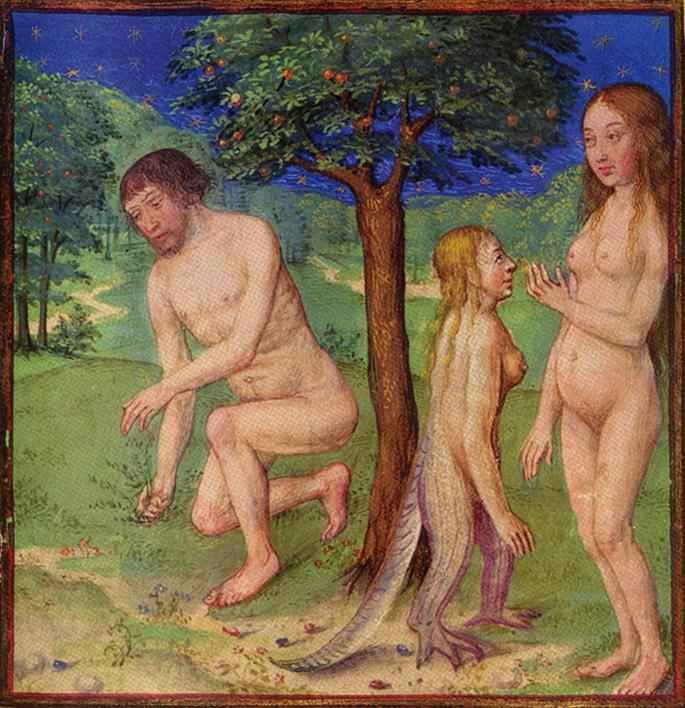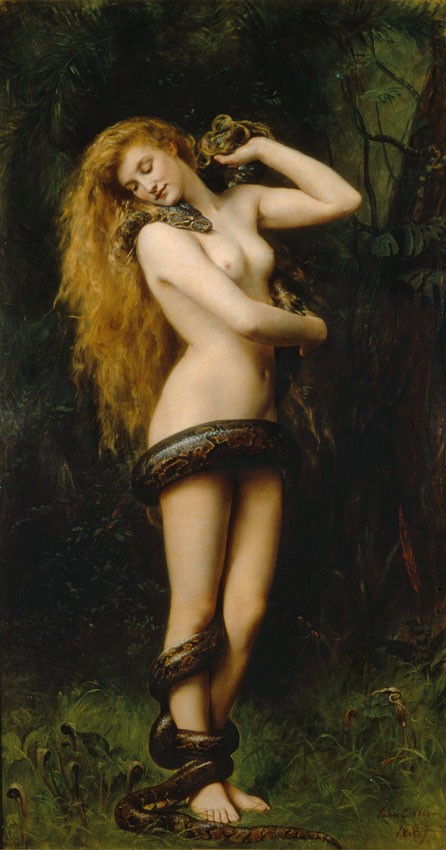Lilith - Demonic Creature in Jewish Mythology
Lilith is one of the most notable and oldest vampiric and demonic figures ever depicted in our legends and myths. Her first mentions come several thousand years ago in ancient Babylonia and Assyria where people feared two of the night creatures the most – the terrible demon goddess Lamastu and her closely associated partner Lilith. The earliest examples of mentions of Lilith come from 6th century BC as the part of the Sumerian epic poem Gilgamesh and the Netherworld. Her original name in that recording was “ki-sikil-lil-la-ke”, which world’s leading Assyriologists and historian of Sumeria Samuel Noah Kramer translated in his 1938 book covering this poem as “Lilith”. In the story, Gilgamesh first met Lilith while he lived in the tree that he wanted to harvest so that he could build from it his throne. After she had been defeated, Lilith fled to woods where he preyed on the weak. Other surviving Assyrian and Babylonian tales describe demoness Lilith as either winged owl-like creature, a demon that lives inside the trees or woman with wings and owl’s feet.
The modern myth of Lilith comes from the stories told in the Bible, where the myth of the Lilith gained much more detailed back-story. The only occurrence of the name Lilith appearing in the Bible is located in the Book of Isaiah where Lilith is mentioned in the list of the eight “unclean animals”, which includes creatures that were poisoned with demonic influences. She was also briefly mentioned in several other Hebrew texts, including Dead Sea Scrolls where creature Lilith was named in its plural form. Greek and Latin Bibles had their variations of demon Lilith name, with Greeks calling her Satyr and Latin Bible as Lamia. She appeared later in many Hebrew texts, but her origins, appearance, and abilities varied widely.
According to the most popular Lilith story in 8-10th century “The Alphabet of Ben Sira”, she was created by the god at the same time as Adam. After defying the will of the Adam and the God, she becomes tainted by hate and possessed by demonic powers, vowing revenge against God and Angels who promised to kill 100 of her children every day until she returned. After she had defied them all, she was banned from entering Heaven, but that did not stop her to vow revenge upon entire mankind that was created by Adam and Eve, promising to kidnap and kill children, destroy women’s hopes for happy families and seduce and torment men. Her two most notable characteristics were that she was “incarnation of men’s lust” and that she was child strangler, but many other Jewish folklore tales mention her other witch-like powers. This medieval tale gave birth to the first vampiric traits of the Lilith myth. According to it, while the primary goal of Lilith to seduce men and use their semen to produce more demon spawns, she would also need to suck on their blood to regain strength, often killing their victims by this act. The incredible popularization of Lilith’s depiction from “The Alphabet of Ben Sira” and other folklore tales was responsible for the adoption of many superstitious ways to be protected or warded against her dark influence – records say that some monks slept with their hands covering their genitals (together with a crucifix) so that they would be safe from her, men often blamed her for their night escapades, and pregnant mothers would ward themselves and their newborn children by wearing amulet bearing the names of angels that were sent to capture Lilith.
Modern myths about Lilith are very varied, but in the recent centuries, she became de-facto one of the most notable figures in the vampire lore. Her entry point to the modern history comes from the Goethe's 1808 book “Faust: The First Part of the Tragedy” which served as an inspiration to many other authors who elevated Lilith’s presence in modern culture and modern occultism. In her modern form, Lilith is depicted as the ultimate combination of evil, monstrosity and ultimate seduction that she had over men. Lilith is often regarded as queen and mother of creatures of the dark, being responsible for nightmares, erotic dreams, diseases, sucking the blood of men and even miscarriages. While folk stories and later novelizations of Dracula’s and vampyre tales depicted such creatures as mostly human in their general shape, Lilith is almost always depicted as a vile winged creature with talons and rarely even with lion’s head. As her vampire myth became more popular in general population, she more and more started being depicted as a stunningly beautiful woman that can stir lust and desire in the heart of any man. She is also often connected with creatures of the night like owls, jackals, and snakes, and stories about her depict that she is most likely strongest during the waning of the moon.
As she is regarded as one of the only notable female vampiric figures in modern religious mythology, Lilith became center-point of countless modern books, films, TV shows and other works of art. In fact, her popularity is so great that she became the foundation for the creation of many widely different characters named Lilith, characters that were not connected to the original Jewish or older legends.

